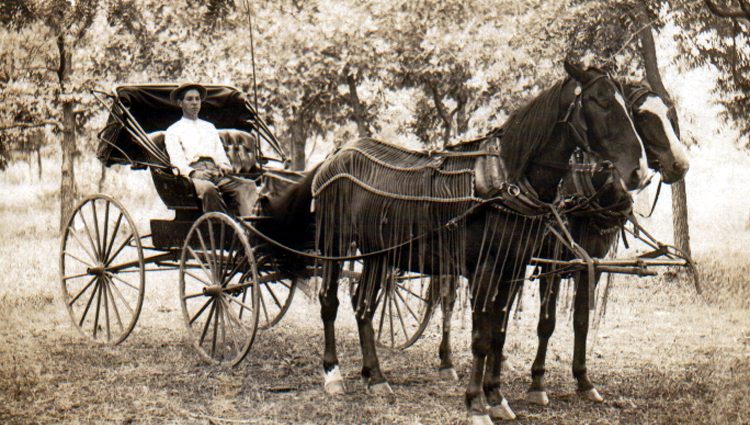John Browne (1863-1902) was one of the first British entrepreneurs of Ooty. He built a fortune in ‘Tonga’ service.
The first mode of transport for Europeans to the Nilgiris was palanquin carried by native bearers. Then came the bullock cart after the foot paths were widened to make them cart paths. After Ooty became the Summer Capital of the Madras Presidency in 1870 there was a huge demand for a more sophisticated transport and faster communication. That was when ‘Tonga’ Browne made a killing by running a horse cart service.
The Tonga service thrived after 1878 when it replaced the grueling practice of native runners taking the mail at day and night. The Brownes made a monopoly of the trade earning the sobriquet ‘Tonga’ Browne.
The Brownes had stables all along the route from Mettuplayam with halts at Coonoor and Yellanalli. Their office was at where Shinkows and other establishments are today.
The Brownes were one of the biggest realtors of their time owning, among others, Assembly Rooms, Lawley Institute, Simpson company (which was their home), Clifton cottage, Shoram palace and Oriental Buildings opposite Collector’s office.
The Brownes were very active in public life. John, who was in the original Garden committee along with McIvor, was known to swear fluently in Tamil and English.
The Brownes built the present Assembly Rooms evidently in 1886 closer to where they owned several houses including their house. But the Rooms did not do well as it was found difficult to get performing artists and troupes. But regular fund raising events were held to help government hospital and other public causes.
The Brownes fortune ended with the death of Harriat in 1899 of cancer at the age of 52. Tonga Browne died three years later at the age of 59. Their only son, a popular veterinary surgeon in Ooty lived up to 81. Both are buried at St. Thomas Church, Ooty.
The Browne papers have been donated by their granddaughter to the Cambridge University archives. An obscure road behind Assembly Rooms is named after Tonga Browne.

